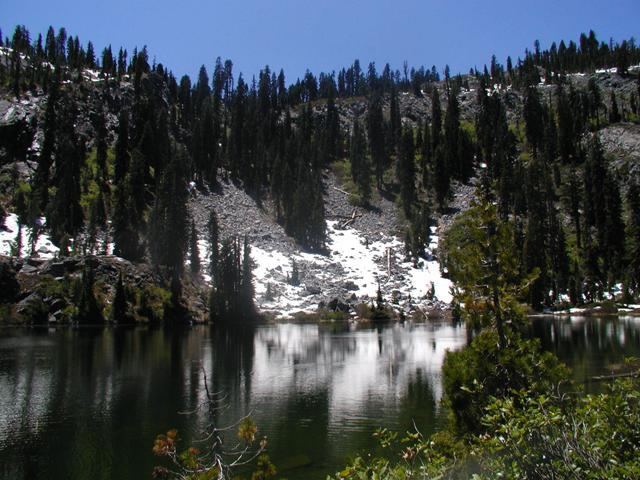Marble Mountains Wilderness Area

The Marble Mountain Wilderness is one of California’s oldest formally designated wilderness areas. Originally established in 1931 as the Marble Mountain Primitive Area, it later became one of the original wilderness areas established by the Wilderness Act of 1964. It contains over a quarter of a million acres of rugged mountainous terrain, diverse vegetation and picturesque high elevation lakes and streams. It was named for Marble Mountain, a monolith of white limestone standing 6,880 feet above sea level. Boulder Peak at 8,229 feet is the highest point in the wilderness and the mouth of Wooley Creek at the wilderness boundary is the lowest point at 640 feet.
At a Glance
| Permit Info: | PERMITS REQUIRED A wilderness permit is not required for entry into the Marble Mountain Wilderness. State of California campfire permits are required regardless of whether inside or outside wilderness. Campfire permits are available from any Forest Service Office or California Department of Forestry station. |
|---|
General Information
General Notes:Wildlife is an integral part of wilderness ecosystems, with a large variety of mammals, birds and reptiles found in the Marble Mountains. When hiking or camping in the Siskiyou Wilderness be "Bear Aware." Likely to be seen are black bears (ranging in color from black to light cinnamon brown), deer, Douglas squirrel, California quail and rattlesnakes. Other animals living here but not as easy to find are fisher, marten wolverine, pileated woodpecker, beaver, coyote and mountain lion. Fishing opportunities for Rainbow trout, eastern brook trout and brown trout are found in many lakes and streams. Wooley Creek in the Marble Mountain Wilderness is a rare stream containing summer steelhead and both fall and spring runs of king salmon. All hunting and fishing in the National Forest and the wilderness is regulated by the California Department of Fish and Game.
For serious botanists, as well as those who simply enjoy "plant watching", the Marble Mountains offer a richness of forbs, shrubs and trees unlike anywhere else in California. In dry, low elevations, you’ll find mixed evergreen forests of tanbark oak, madrone and Douglas fir. At very high elevations, red fir and mountain hemlock dominate. There are many endemic plants also including the wing-seed draba of the mustard family, found only in the vicinity of Marble Valley and King’s Castle. The mountain lady’s slipper (Cypripedium montanum) and Scarlet Fritillary (Fritillaria recurvo) are popular finds for wildflower enthusiasts.
The geology of the Marble Mountain Wilderness is as varied as it vegetation. Lying near the center of the Klamath Mountains geologic province it consists of a succession of fault bounded rock units, called terranes, which tilt to the east like overlapping roof tiles. These rocks range in age from 145 to 570 million years old. Over the past 2 million years, successive advances of glaciers removed the deep soils, scooped out U-shaped valleys and formed scenic glacial lakes for visitors from all over the world to admire and enjoy. Please follow the wilderness regulations and use Leave No Trace techniques when visiting Marble Mountain Wilderness to ensure protection of this unique area.






